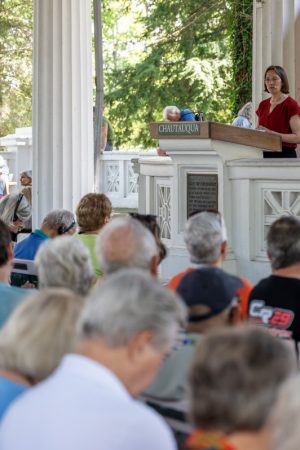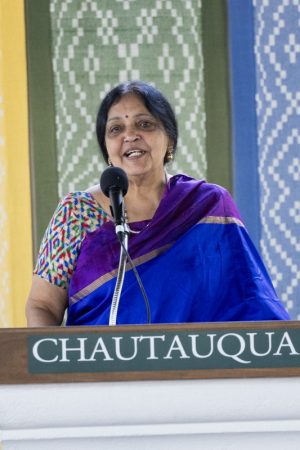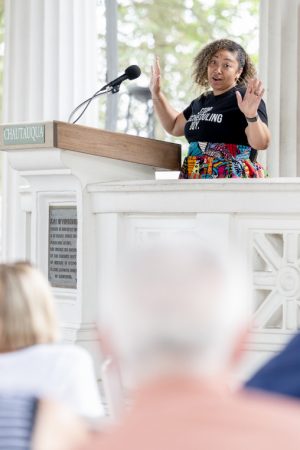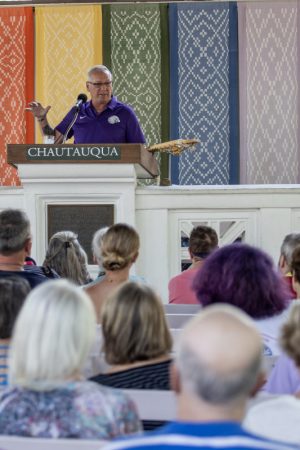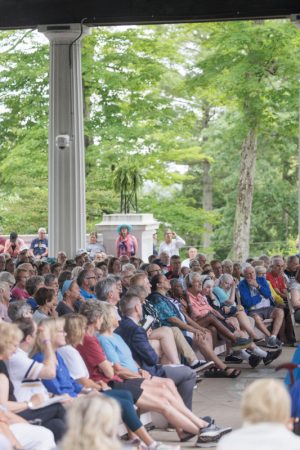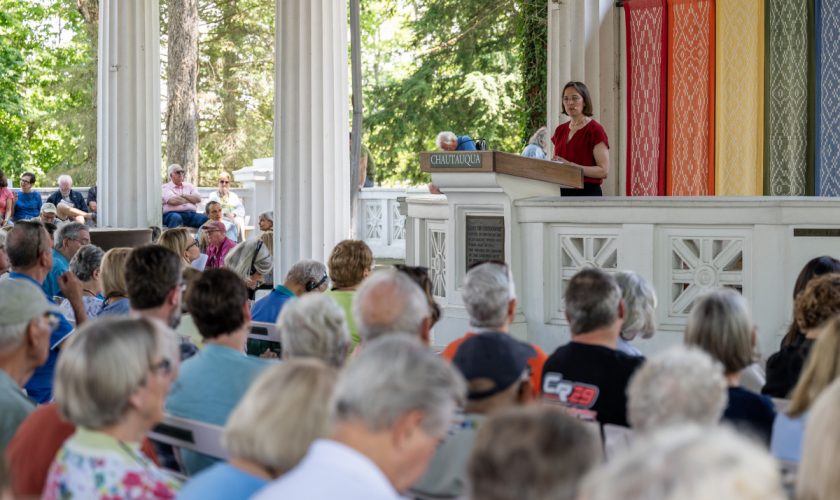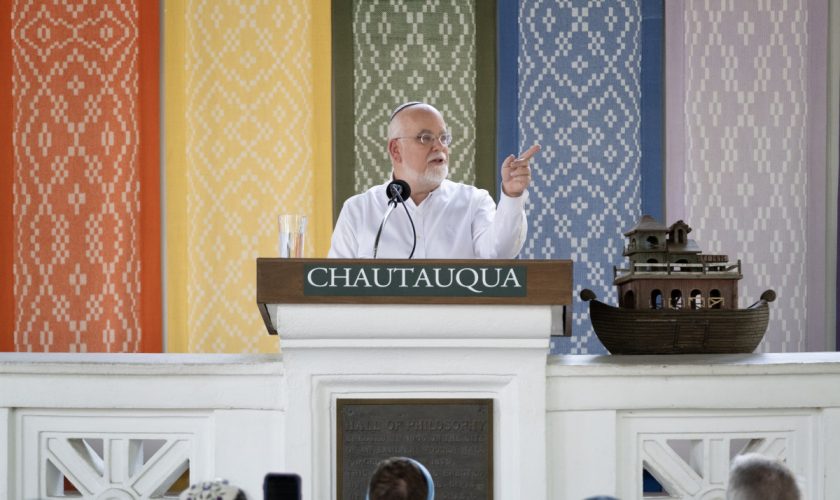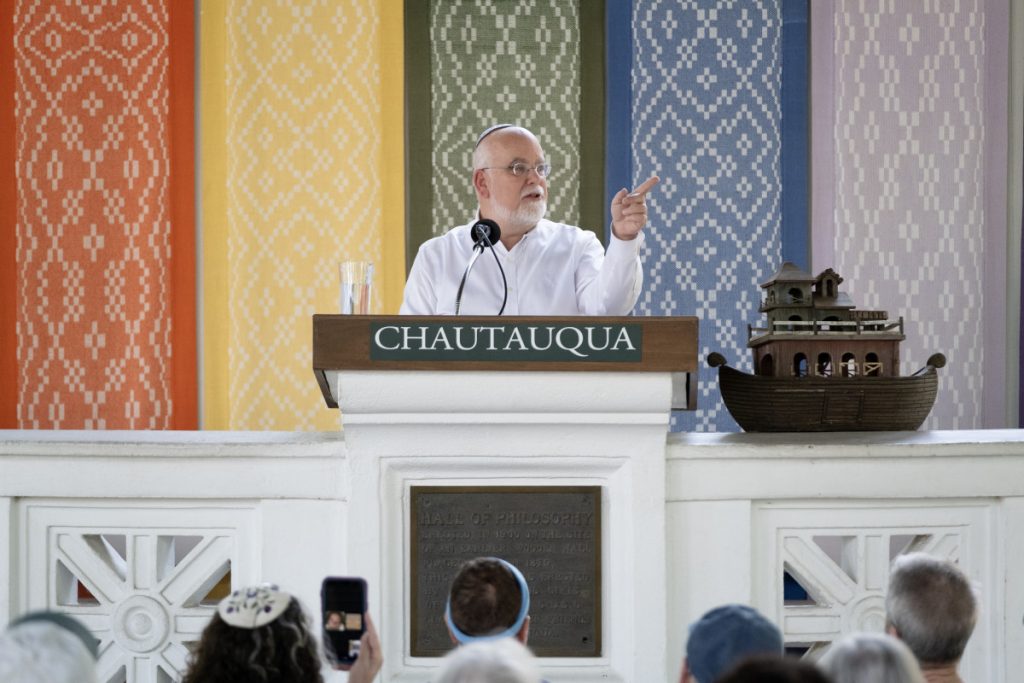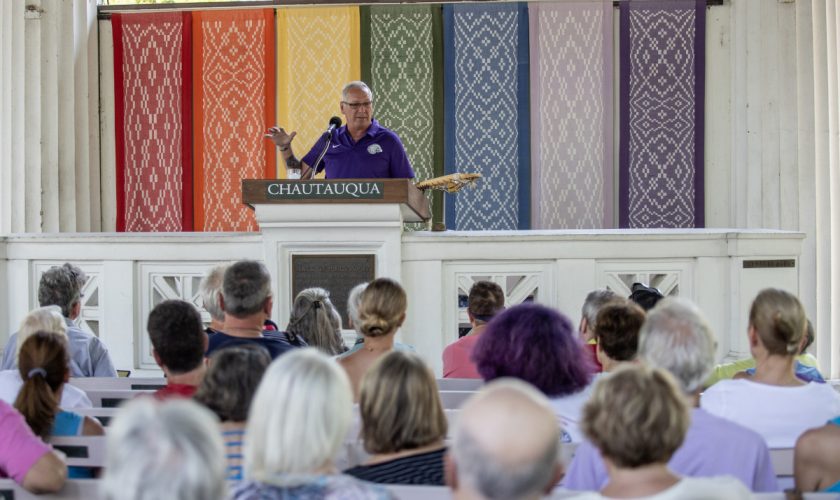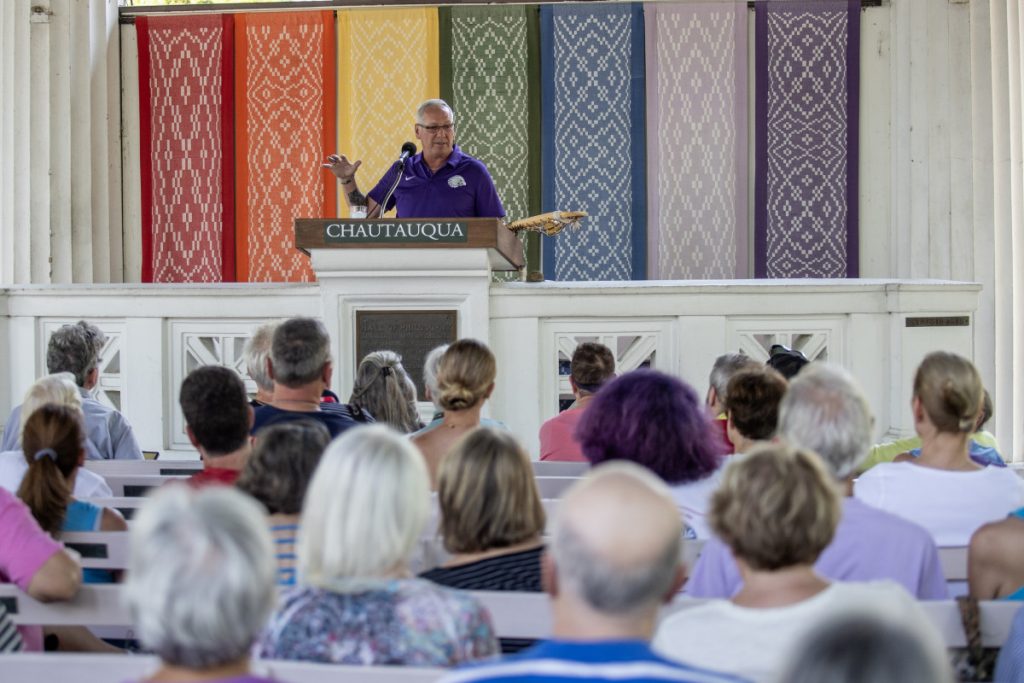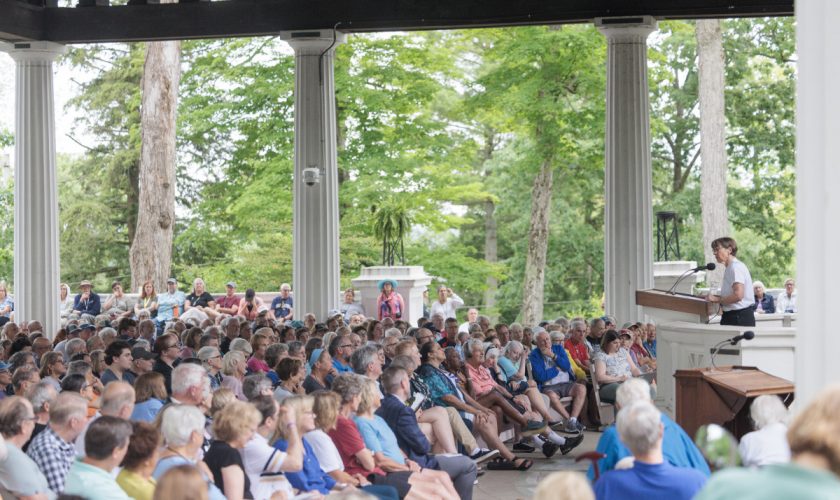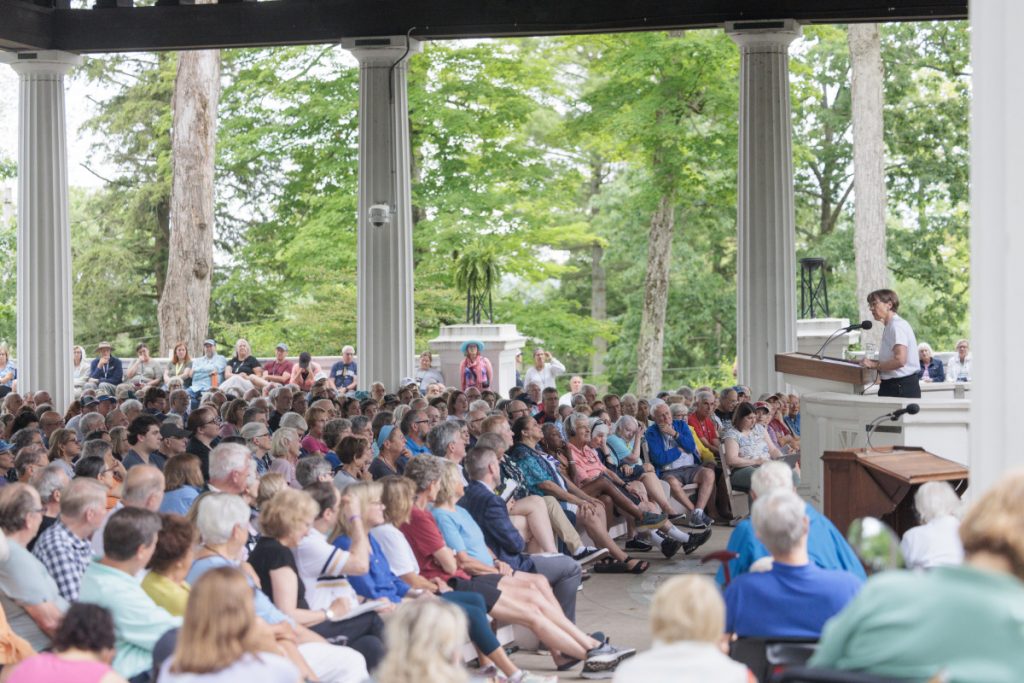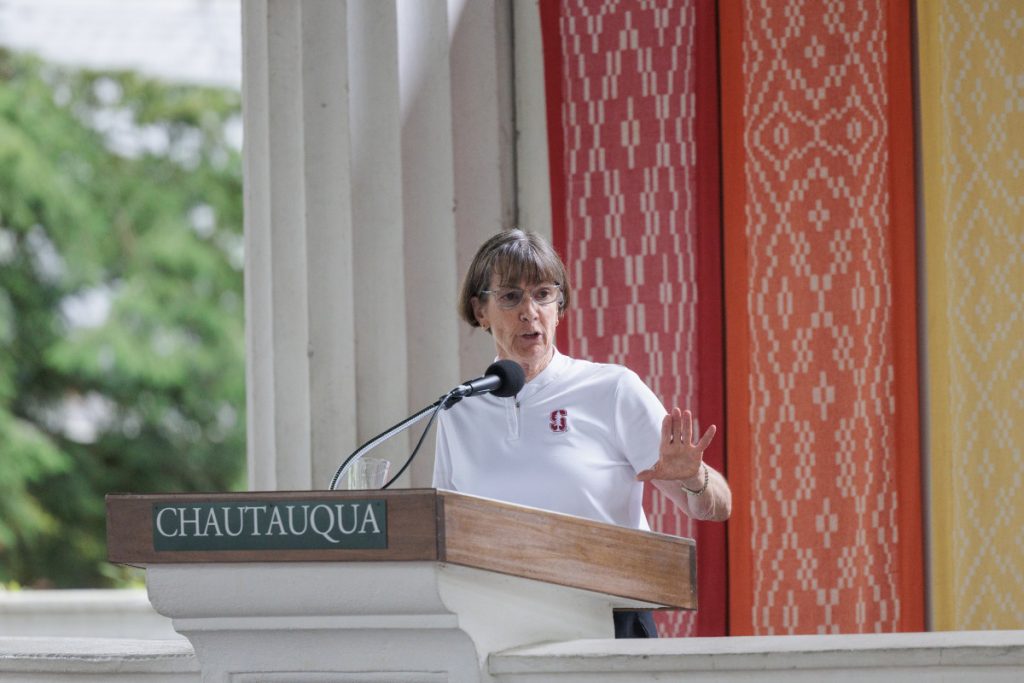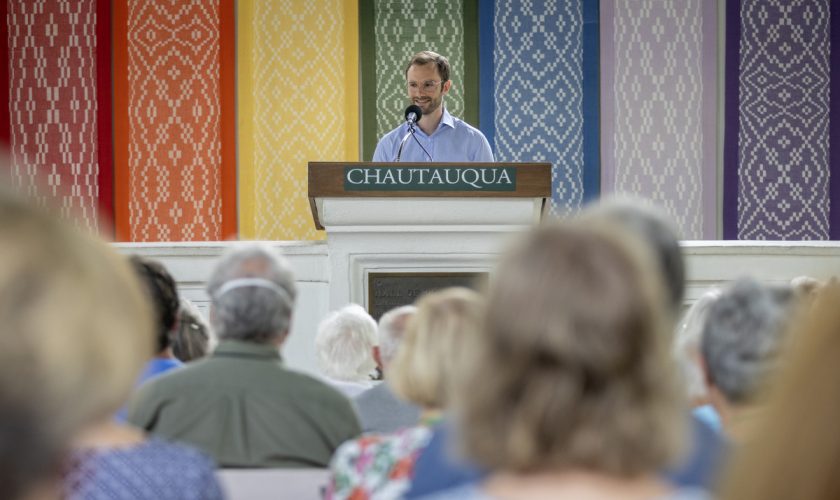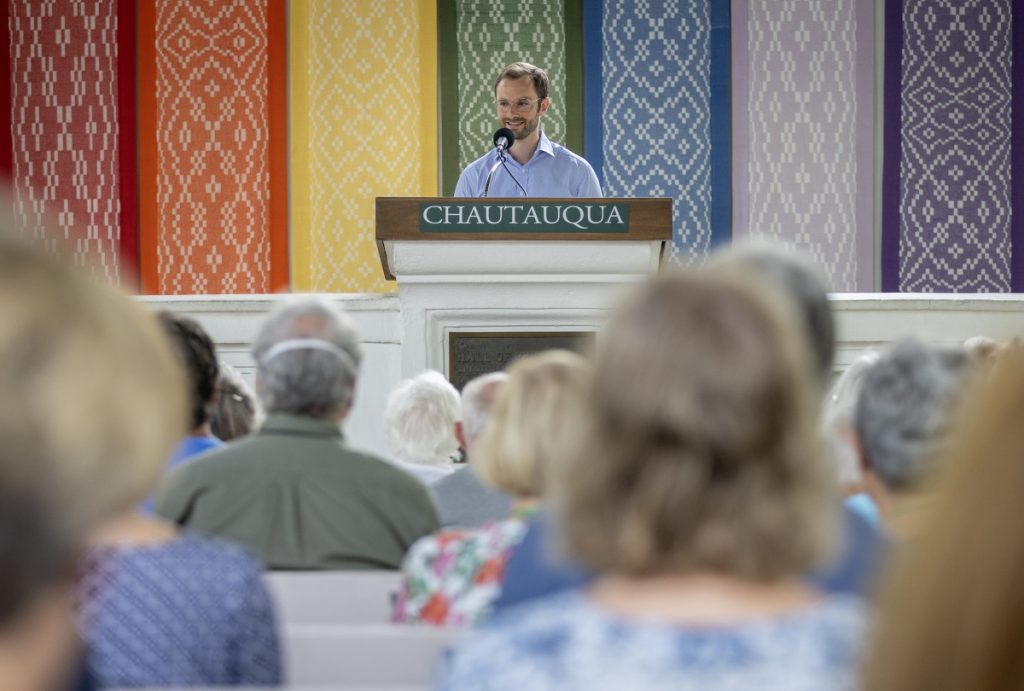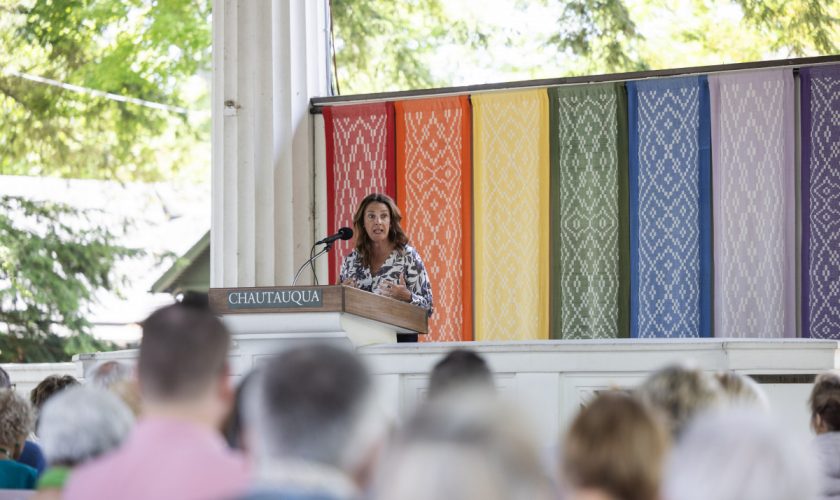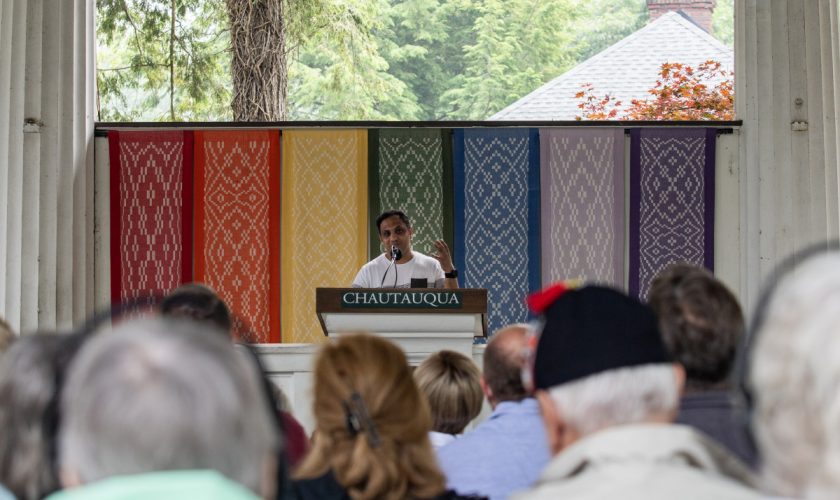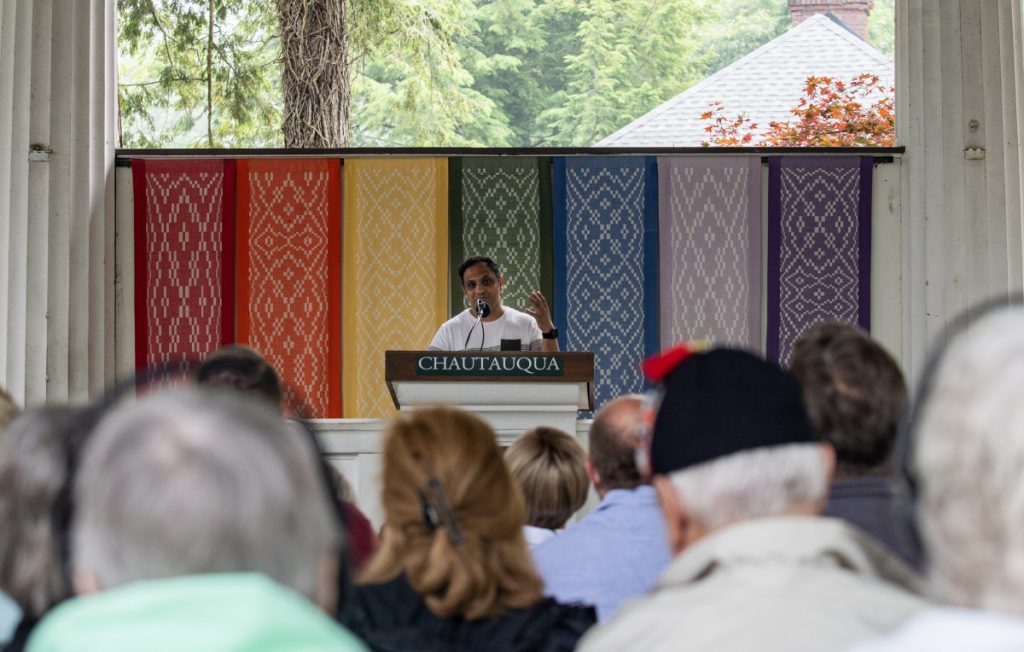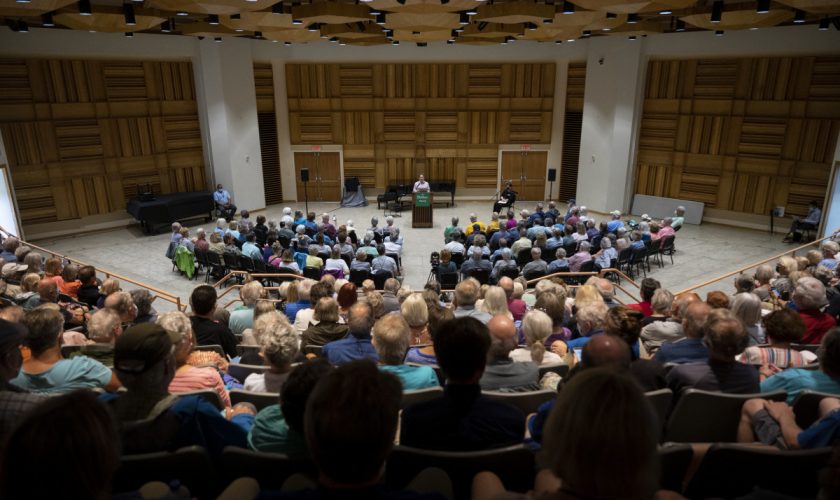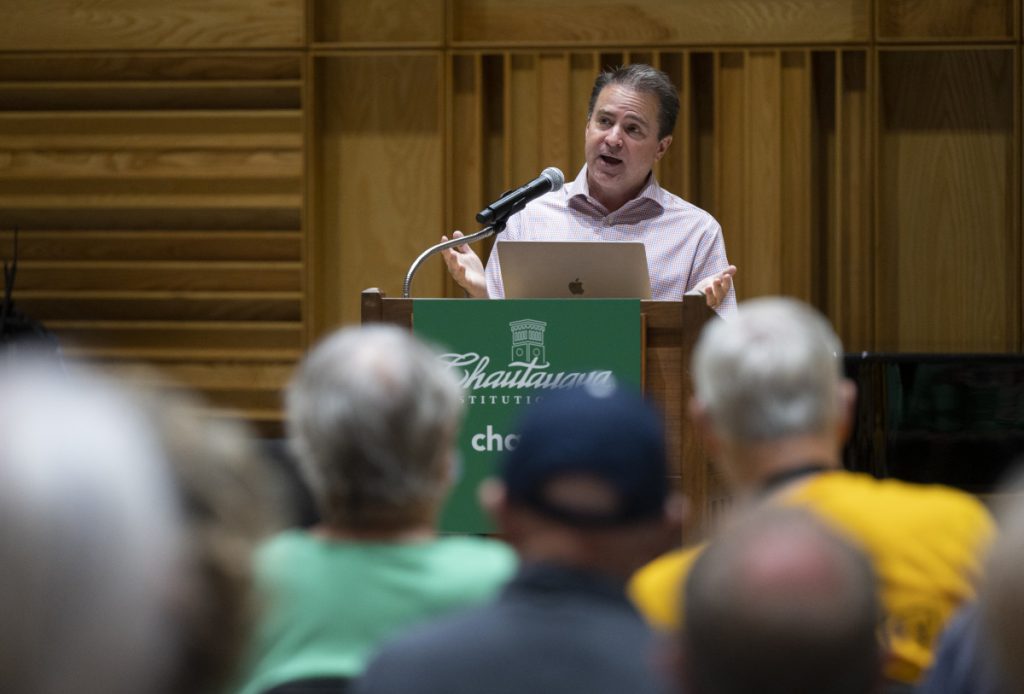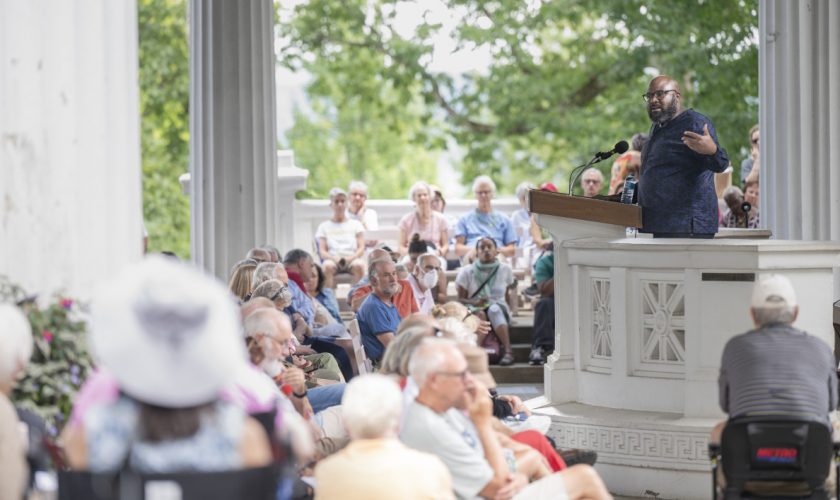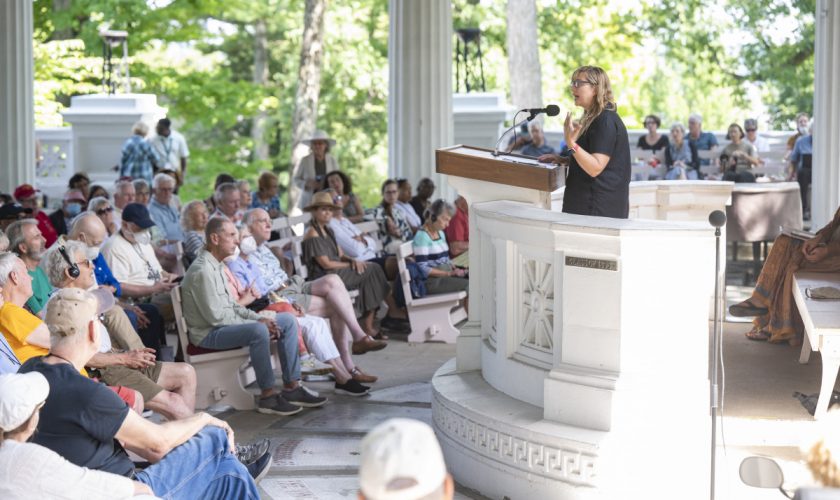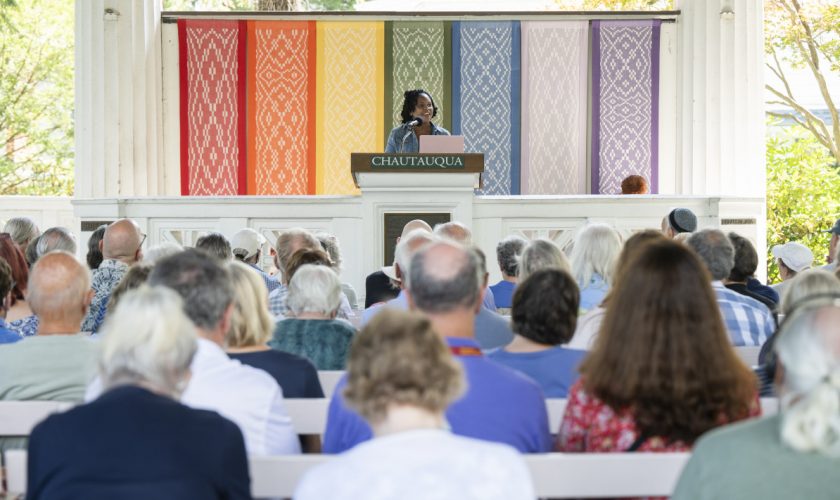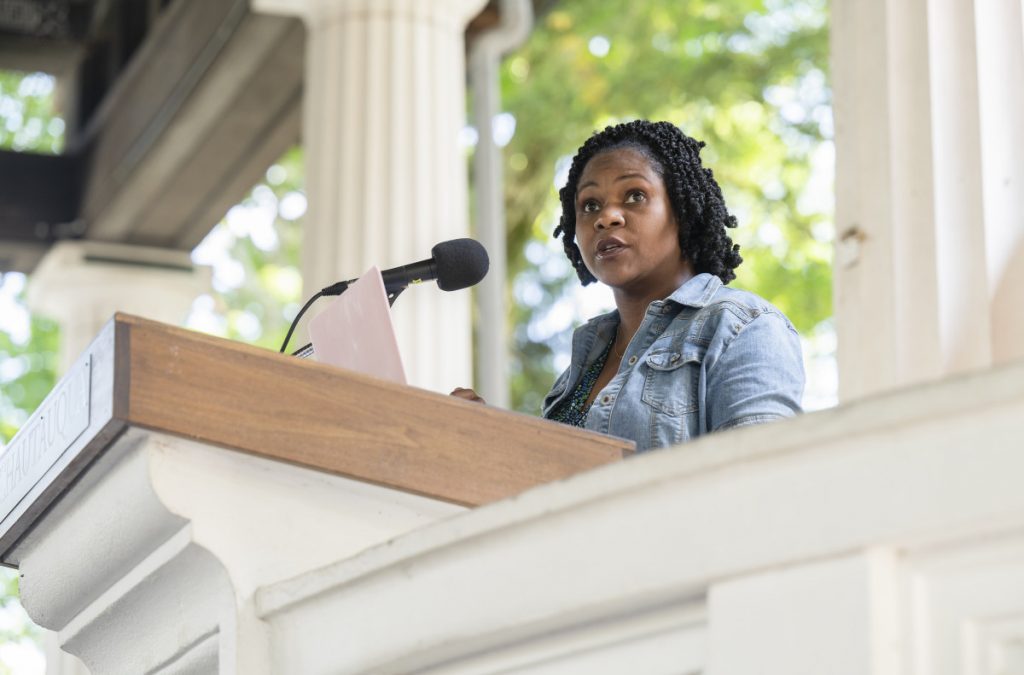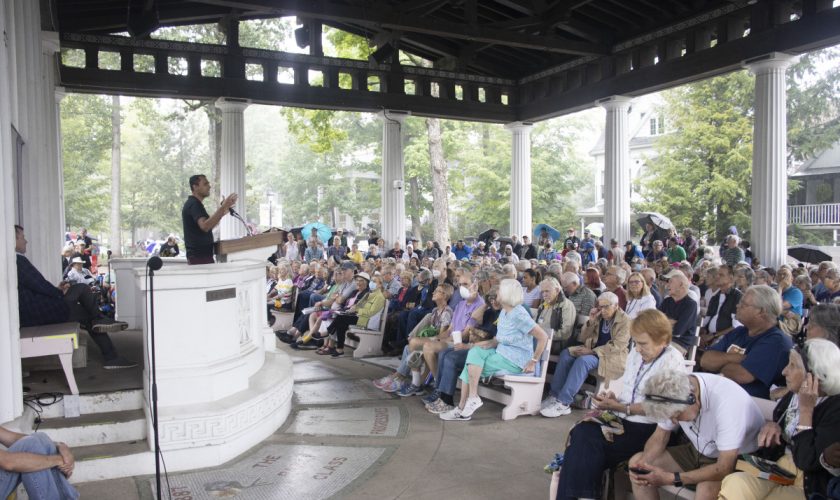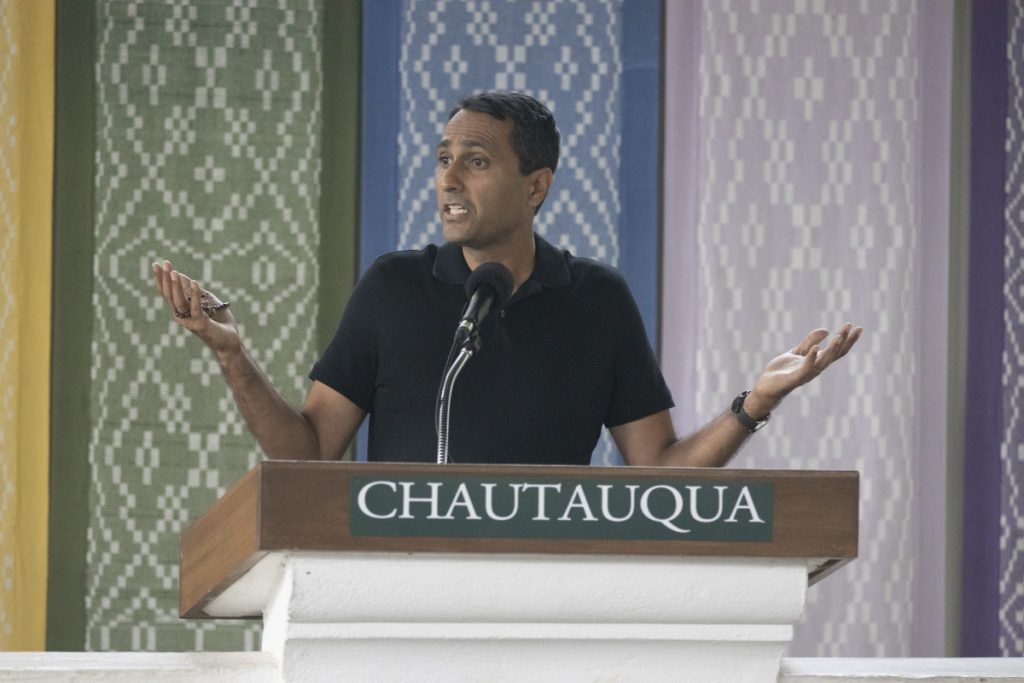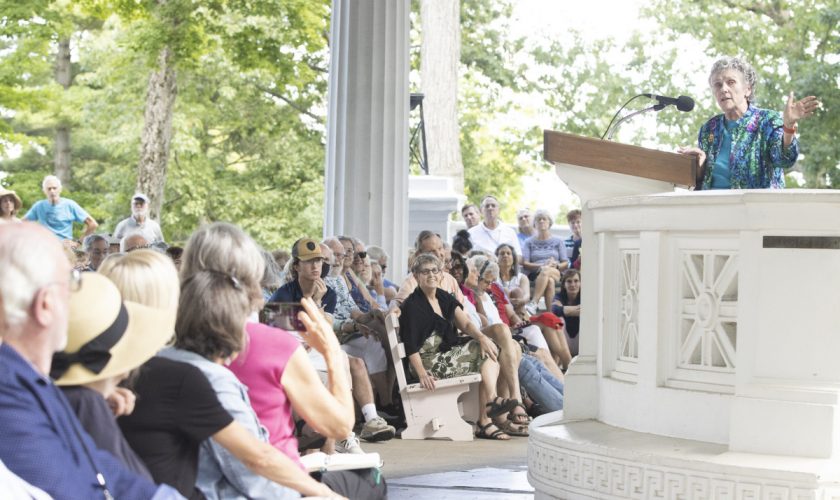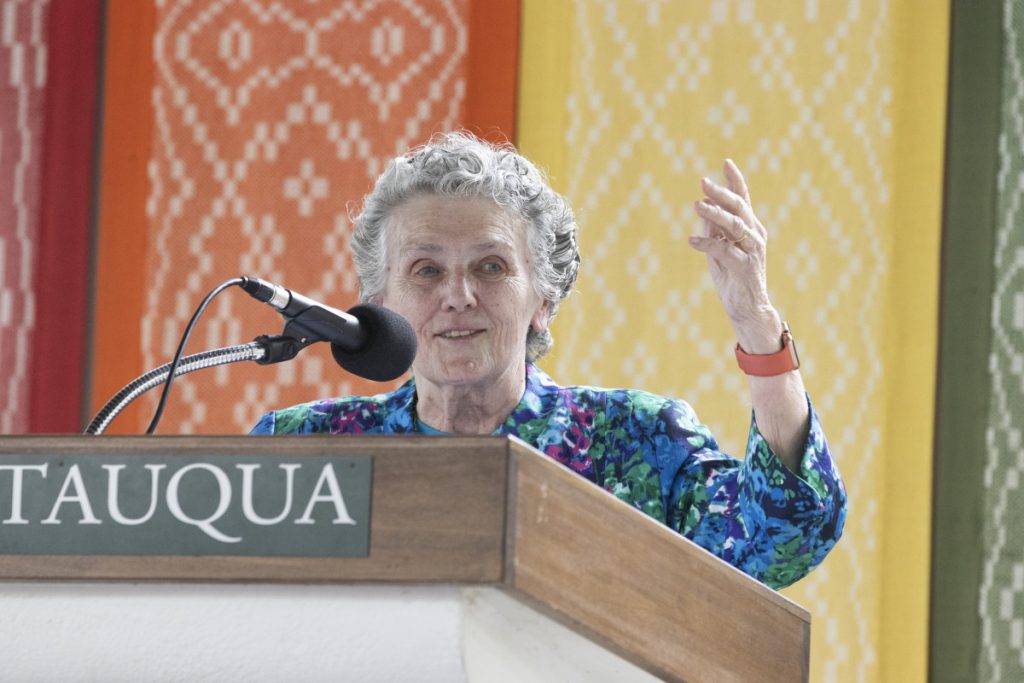
James Buckser
Staff writer
The future of faith is in flux. With churches closing and many eschewing traditional religious affiliation, it’s hard to know what’s next for the practice of religion.
In her lecture Monday, sociology professor Wendy Cadge said that in these uncertain times, we might learn something from chaplains.
Cadge knows faith well. The Barbara Mandel Professor of Humanistic Social Sciences at Brandeis University, she is the author of three books on religion, two of them on chaplains.
She is also the founder of the Transforming Chaplaincy Project and the Chaplaincy Innovation Lab, where she serves as director. Cadge brought her expertise on this area of faith to the Chautauqua Institution at 2 p.m. Monday at the Hall of Philosophy, where she opened the Interfaith Lecture Series week, “Faith and Health: Considering the Center of Wellbeing in America.” Originally scheduled to give her talk today, she stepped in for Eboo Patel Monday instead.
American religion, according to Cadge, is in the middle of a “tectonic shift in its delivery system.”
“Religion isn’t going away,” Cadge said. “But the congregation, local clergy and other traditional institutions through which my parents and grandparents engaged with religion and spirituality and many of life’s eternal questions, are on the decline.”
Cadge says this varies by location, but the decline in traditional practice is present across the country and in most faiths.
“American religion is changing,” Cadge said. “These changes have been happening for some time, and we’re in a transitional — what the sociologist Ann Swidler would call — an ‘unsettled’ time right now.”
The changes, Cadge said, are affecting the “delivery systems through which we engage with life’s eternal questions” more than the answers to those questions.
However, that doesn’t mean there’s a dearth of religious thought. New systems are being created in the “spiritual infrastructure of the future.”
“These new delivery systems exist and are being built by many of us in sacred and secular places right now,” Cadge said. “I want to help us identify them, to look and see them with new eyes and broader perspectives.”
She gave examples of the “new pieces” of infrastructure that might include yoga classes, potluck groups, or even the many chapters of the Harry Potter alliance.
“These groups don’t necessarily call themselves religious,” Cadge said. “But they certainly fulfill some of the functions that congregations did for my parents and grandparents.”
She said she sees chaplains fitting within this landscape of non-congregational spiritual practice, and is convinced that learning about the way chaplains work can offer a glimpse into the future.
Chaplains, according to Cadge, are clergy or religious guides who serve outside of houses of worship in places such as hospitals, prisons and universities. In the past, they even traveled in the circus.
For example, chaplains like the Rev. Ann Kansfield serve the spiritual needs of the New York City Fire Department. In her work with the FDNY, Kansfield has been called to scenes with grieving parents and prayed with firefighters at “the height of COVID.”
“Anytime firefighters are at a point where they’re really at a loss, when their back is against the wall, it’s a great time to call a chaplain,” Cadge said.
While religion and spirituality may be changing, people still have spiritual needs. Some people continue to attend traditional institutions, but others go to chaplains, she said.
“I think Ann (has) illustrated for us how she has helped tend to many of our spirits in these moments,” Cadge said. “She sits with people, she comes alongside, she offers water, and tissues and sometimes prayer.”
Chaplains became prevalent in news coverage during the COVID pandemic, Cadge said. Major outlets like The New York Times were taking an interest in chaplaincy.
“I reminded them … chaplains are not new. They’ve always been working in these places,” she said.
The reason, Cadge said, that they were able to “pivot” so quickly during COVID is because they were already prepped and situated for that kind of work.
“It was the media … seeing them for the first time that was different,” Cadge said. “Not their work.”
About 20% of the American public had contact with a chaplain in the last two years, according to a national survey Cadge and her colleagues at Brandeis conducted in March 2019. They confirmed their findings in 2022 when a survey they did with Gallup showed 19% interacted with a chaplain, and most in healthcare settings.
“That’s 52 million people who had contact with a chaplain, 35 million of them in healthcare organizations,” Cadge said. “Interviews we have conducted in research with people who had contact with chaplains, they tell us how chaplains offer social, emotional and functional components of care.”
Chaplains, said Cadge, are there during the difficult decisions, the bad test results, and withdrawing care. In three stories Cadge shared, people found comfort from chaplains in very difficult times: after the death of a loved one, after a near-fatal car accident and when “bring(ing) out meaning” to help find peace.
“Chaplains are central to health and wellness in the United States, in our health care organizations, where we all need nurturing of spirits,” Cadge said. “They talk often about being present, and what that really means is not just being physically present, but making space for people where, and as, they are.”
Cadge offered three points of conclusion. First, religion is always changing, and these new changes may be bigger than others. Second, a “new spiritual infrastructure” is being built, but isn’t always labeled as such. Third, we can learn from chaplains about these “alternative delivery systems.”
Cadge said while working on a book titled Spiritual Care: the Everyday Work of Chaplains in the 2010s, she found that the chaplains she interviewed were all facing similar problems, but didn’t know each other.
Instead of writing her book as planned, Cadge and her colleagues launched the Chaplaincy Innovation Lab in order to bring chaplains, theological educators, clinical educators and social scientists together in conversation about spiritual care.
“We’re trying to pitch a big tent, to figure out how to care for the caregivers as they try to serve our suffering world,” Cadge said.
Currently, the Chaplaincy Innovation Lab has what Cadge believes may be the largest gathering of chaplains in the world, with 4,500 in a private Facebook group that has “incredibly meaningful and respectful conversations helping one another out.”
One of the challenges Cadge said chaplains face is in finance.
“How do we build business models to support spiritual care outside of traditional churches and other institutions?” Cadge asked. “How do we move from what has been to what is becoming?”
Cadge said her organization completed a gap analysis to seek out the needs for spiritual care. Cadge asked the assembled Chautauquans for support in increasing access to chaplains.
“I’m hoping some of you will join us, with your talents, with your advice, with your volunteer hours,” Cadge said. “It’s going to take all of us to build the spiritual infrastructure that’s going to nurture our own and our children’s spirits.”
Cadge closed with an anecdote about a woman she called Chaplain Meg and “miracle babies.” While researching her book Paging God: Religion in the Halls of Medicine, Cadge spoke to a number of nurses who had seen miraculous recoveries from poor prognoses. Some chalked it up to medical skill, some to divinity and some were unsure.
“When I talked to Chaplain Meg about these things, she asked me bigger questions about what a miracle is,” Cadge said.
Meg told Cadge a story about a girl with a congenital heart defect who lived a relatively normal life for more than 20 years. Meg met the girl while she was waiting for a heart-lung transplant that arrived too late. After she died, Cadge said, her mother felt “it had all been for naught.” Chaplain Meg disagreed. “I think you had a 25-year miracle,” Cadge quoted Meg saying. “This was a child that you didn’t expect to ever come home. You had her for 25 years.”
Meg told Cadge that she felt most miracles were small, and sometimes add up to a big miracle.
“Usually it’s the little things that happen,” Cadge recalled Meg saying, like when a good day gives a non-communicative patient a chance to say goodbye to their family. “That’s what I think of as miracles.”

